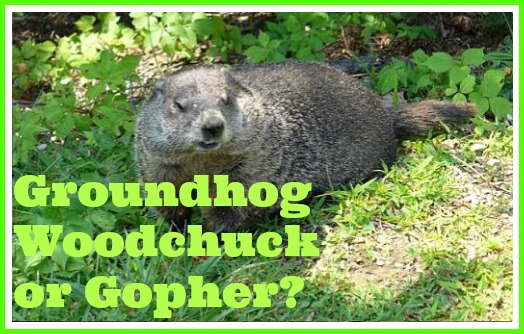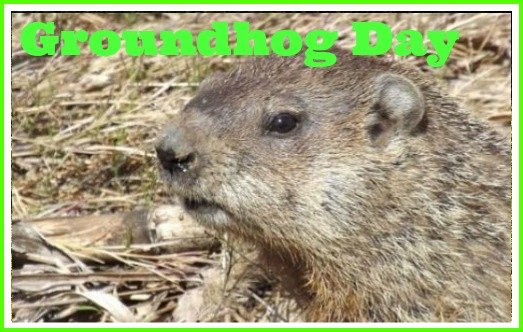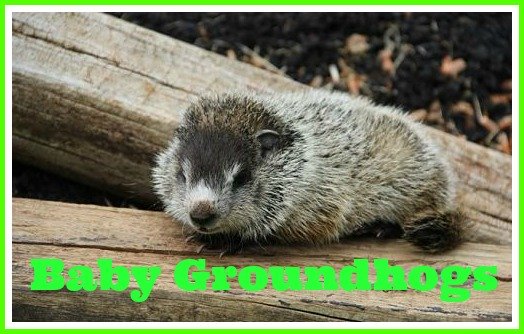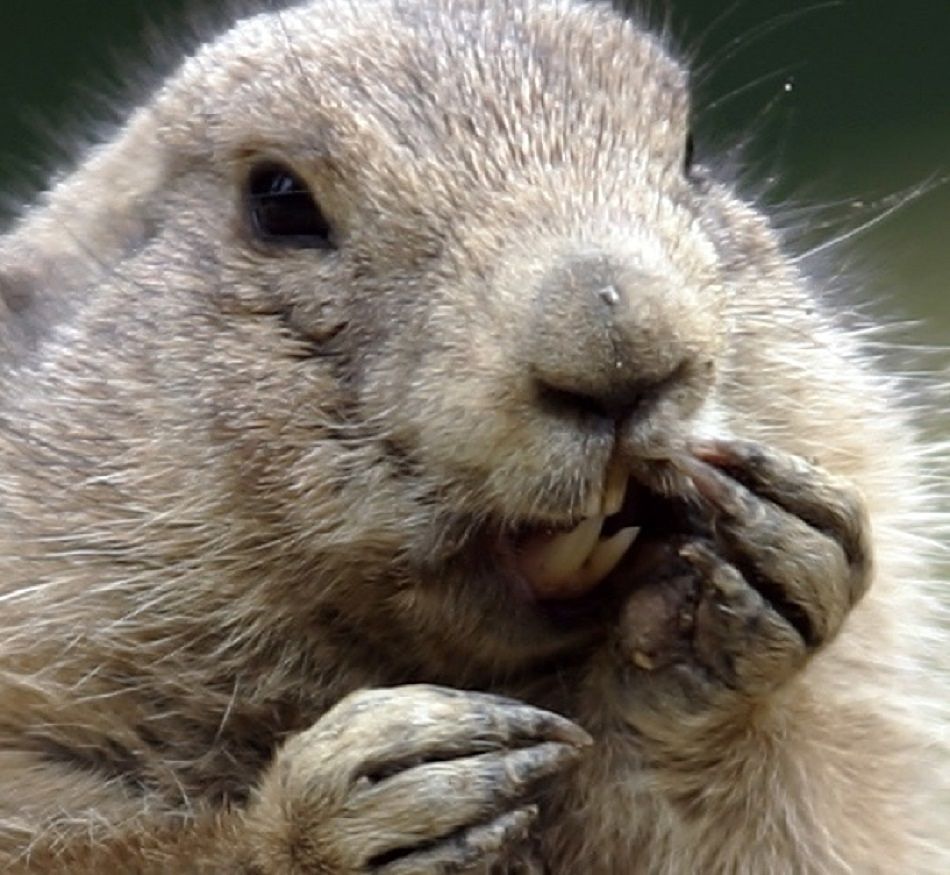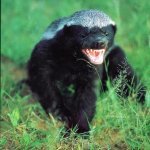groundhog Facts
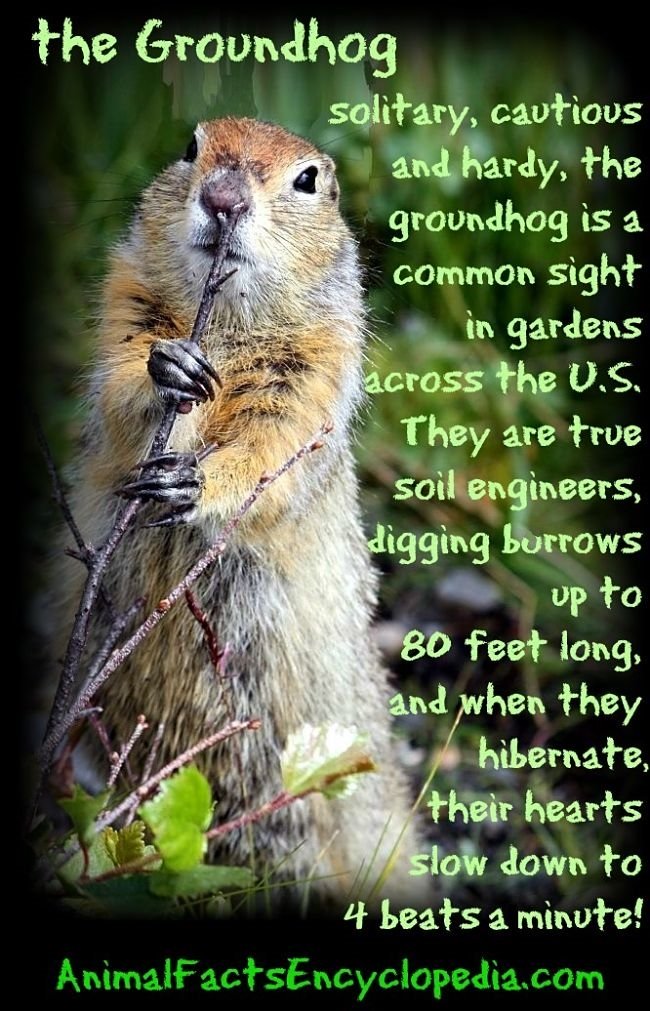
One of the coolest groundhog facts is that a groundhogs teeth can grow 1/16th of an inch in just one week! The groundhog, also known as a woodchuck, is a husky, well-furred rodent common across much of North America. The groundhog is a type of marmot, which are several species of large ground squirrels.
Most of the marmot species live in mountainous areas, but groundhogs live in the plains and valleys, usually where wooded areas adjoin grasslands.
The groundhog is the only rodent with a day named after it. February 2nd is groundhog day, and tradition has it that if the hibernating groundhog climbs out of his burrow and sees his shadow, there will be six more weeks of winter, if he doesn't see his shadow, spring will come soon.
The groundhog is a solitary animal who lives underground in a large, elaborate burrow, called a sette. These underground mazes may be 80 feet long, with several levels and multiple entrances. Most adult groundhogs dig 3 or 4 separate settes on their territory.
They spend a large amount of time underground, and will even attack crops from below, literally pulling carrots and potatoes straight down into their dens.
Groundhogs are very wary, and will dive back into their sette when possible danger approaches, but if cornered, they will aggressively defend themselves with their huge incisors and razor sharp claws.
Averaging only about 10 pounds and 20 inches long, groundhogs have still been known to stave off bobcats, coyotes, and many a family dog, although they are the staple diet of most North American predators, particularly foxes.
The groundhog is mostly a vegetarian that prefers greenery, fruits and vegetables, but will supplement with insects. Their appetite is legendary, and they can be extremely destructive towards crops, capable of eating half their own weight in groceries in one night. Despite being considered a pest, the groundhog still has it's own holiday, and Groundhog day is still a beloved tradition.
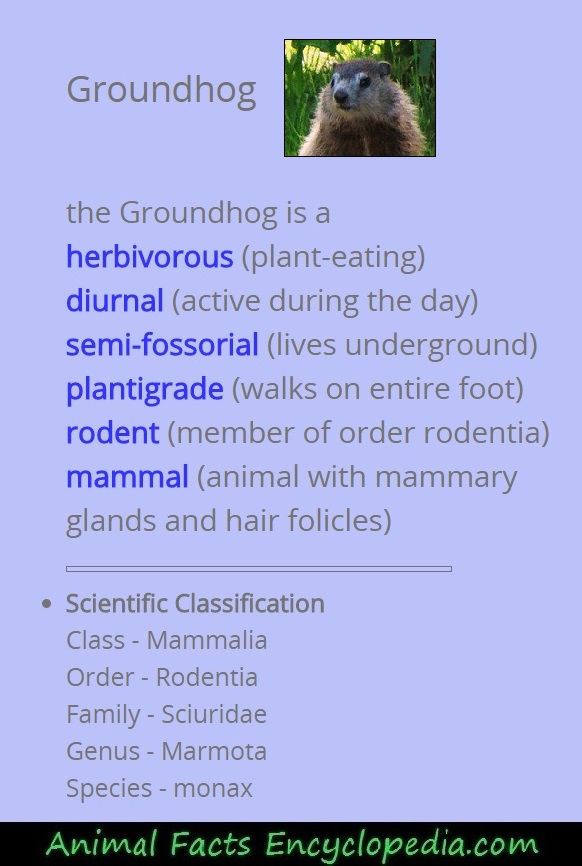
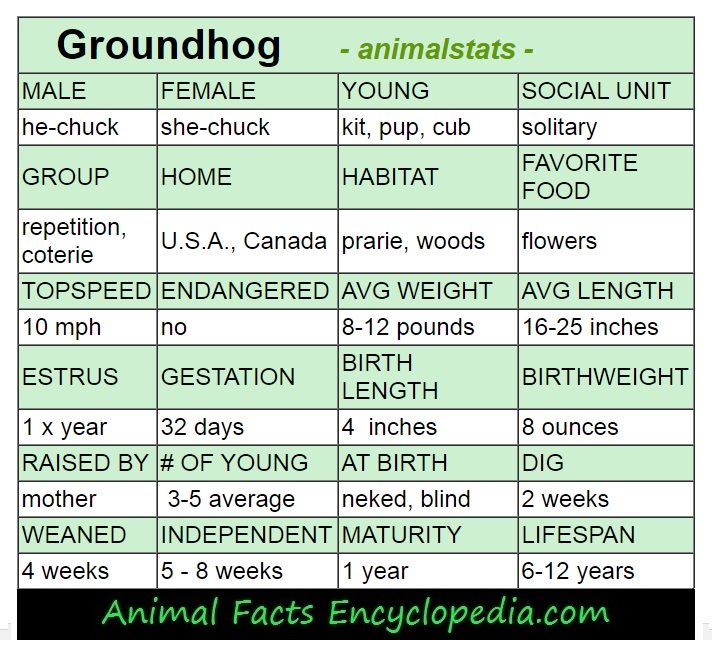
groundhog lifestyle
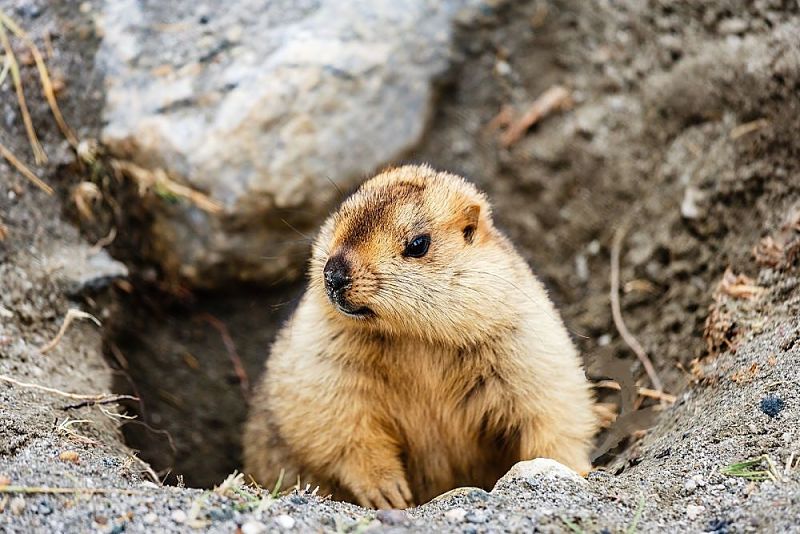
Groundhogs are active during the day, and feed mostly in the early morning and late afternoon. They spend lots of time mending and expanding their settes, and eating a variety of vegetation, supplemented by insects, snails and grubs.
One of the things that distinguishes groundhogs from other marmots is that they are generally solitary animals. While most marmots live in small family groups, the groundhog is a loner, and even a bit aniti-social.
They defend their burrows and territories from other groundhogs in loud squabbles which include hopping about, swishing their tails and chattering their teeth. Even baby groundhogs leave their mothers rather quickly to find their own space, setting off at the tender age of 5 or 6 weeks.
Even though they live alone, groundhogs will use a shrill, whistle-like warning call, which gives them the common name whistlepig, and alerts all the groundhogs in the area of any danger, such as a low-flying hawk.
The groundhog is one of the few animals that enter a state of true hibernation. It retreats to it's burrow in late fall and goes into a deep sleep during which it will not eat.
The groundhog's body temperature drops from 98 degrees Fahrenheit, to as low as 38 degrees Fahrenheit, and it's heart rate slows from 80 beats a minute to as few as 4 beats a minute.
Hibernation may last as long as 5 months, but will include periods of arousal, during which the groundhog may relieve itself, and even step outside for a bit. When the groundhog finally emerges from hibernation, it's body is thin and depleted.
During the spring and summer, the groundhog must replenish itself, but also prepare for another long winter. They have a special type of body fat known as brown adipose tissue, that forms around their brain and other organs, providing extra heat. They are ravenous eaters because of this, and can destroy rows of crops at a time.
In addition to eating crops, the long burrows they dig can disrupt growing plants from below, and destabilize the foundations of small buildings and sheds.
Groundhogs are shot at, trapped and poisoned in farming communities. They are also standard fare for dozens of animals like foxes, mountain lions, coyotes and wolves, but they are vital to much of the North American ecosystem.
a few more groundhog facts
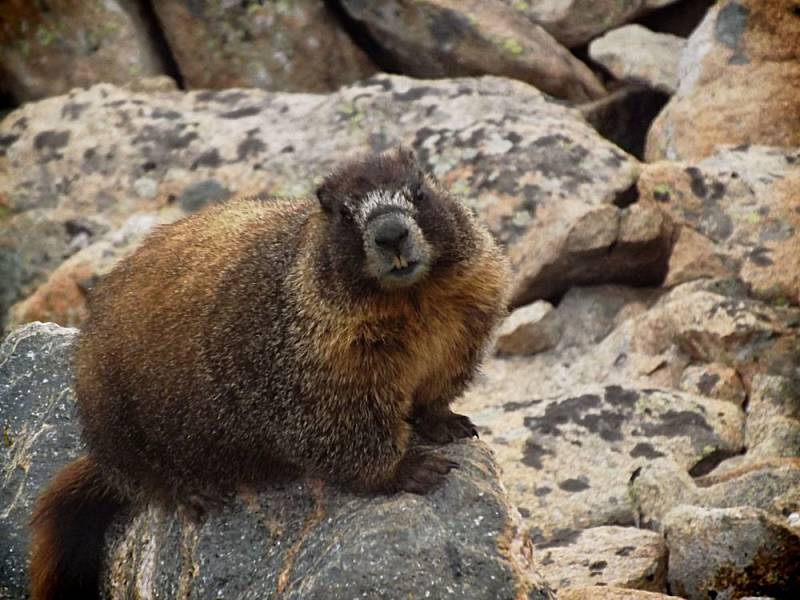
- The groundhog is also known as the woodchuck
- The groundhogs burrow is called a sette (pronounced set)
- When groundhogs hibernate their hearts may beat only 4 times a minute
- Other animals such as skunks, use groundhog burrows as their home
- Groundhogs use a high-pitched whislte as a warning
- Groundhogs loose over 30% of their body weight during hibernation
- The groundhog is the only rodent with it's own day!
Scientific Classification:
| Groundhog - animalstats - | |||
|---|---|---|---|
| MALE | FEMALE | YOUNG | SOCIAL UNIT |
| he-chuck | she-chuck | kit, pup, cub | solitary |
| GROUP | HOME | HABITAT | FAVORITE FOOD |
| repetition, coterie |
U.S.A., Canada | prarie, woods | flowers |
| TOPSPEED | ENDANGERED | AVG WEIGHT | AVG LENGTH |
| 10 mph | no | 8-12 pounds | 16-25 inches |
| ESTRUS | GESTATION | BIRTH LENGTH | BIRTHWEIGHT |
| 1 x year | 32 days | 4 inches | 8 ounces |
| RAISED BY | # OF YOUNG | AT BIRTH | DIG |
| mother | 3-5 average | neked, blind | 2 weeks |
| WEANED | INDEPENDENT | MATURITY | LIFESPAN |
| 4 weeks | 5 - 8 weeks | 1 year | 6-12 years |
see more animal extreme closeups
Recent Articles
-
African Animals - Animal Facts Encyclopedia
Oct 11, 16 10:27 PM
African Animals facts photos and videos..Africa is a wonderland for animal lovers, and a schoolroom for anyone who wants to learn about nature, beauty and the rhythm of life -
Baboon Facts - Animal Facts Encyclopedia
Oct 11, 16 10:26 PM
Baboon facts, photos, videos and information - Baboons are very distinctive looking monkeys with long, dog-like snouts and close set eyes. -
Great Apes Facts - Animal Facts Encyclopedia
Oct 11, 16 10:25 PM
Great apes facts, photos and videos..Human beings did not evolve from chimpanzees, modern chimps and gorillas do not appear in the fossil records until much more recently than homo sapiens..
